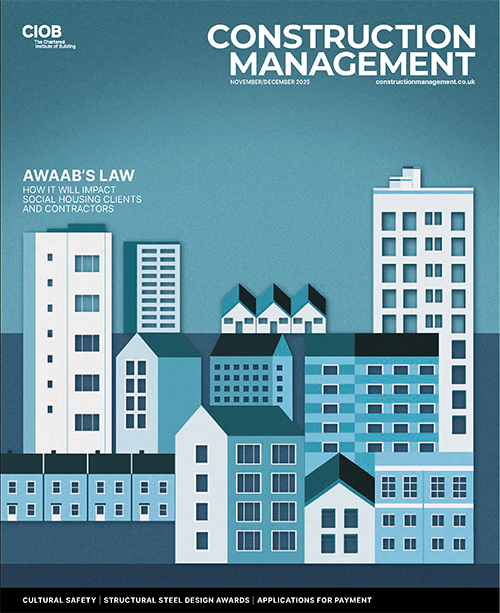
Digital product passports can help the built environment to be safer and greener, but how much do you know about them? Justin Stanton answers the key questions.
Digital product passports (DPPs) are set to help construction’s drive to improve on a number of fronts. They will help with golden thread compliance, they will be an enabler for improved sustainability and a foundational element of circular construction, and they should improve the handover process.
But what are they? How will they work? Let’s dive in.
What are DPPs?
DPPs stem from the publication of the EU’s Construction Products Regulation (CPR) late last year.
Regulation (EU) 2024/3110 lays down harmonised rules for the marketing of construction products, emphasising digitalisation, transparency and sustainability. The text of the regulation runs to more than 45,000 words, but the key detail about DPPs is covered by Articles 75-80, which run to less than 1,500 words.
In short, it states that DPPs will have to contain the following information:
- The declaration of performance and conformity.
- The general product information, instructions for use and safety information.
- The technical documentation.
- The label.
- The unique identifier.
- Documentation required under other EU law applicable to the product.
- The data carrier (the barcode, QR code or data matrix that links to the digital file for that product).
DPPs need to be accurate, complete, up-to-date and interoperable with BIM. The data will need to be structured to be computer-readable and searchable, and the information must be transferable without limitations derived from proprietary formats or systems.
When will DPPs be live?
While the CPR’s text proposes a timeline, those involved in the DPP process believe it will be 2027 and beyond before the passports and the system to operate them become live. However, the text is clear that product manufacturers will have to ensure that the digital record the passport links to can be accessed for 10 years after that product ceases production.
It’s an EU thing then?
Yes, but it will apply to the UK because the government embraced the concept in its Construction Products Reform Green Paper, published in February.
The green paper is the government’s response to the Grenfell Inquiry final report. It makes clear the government’s position that “it is essential that all stakeholders can access clear and credible product information to make informed decisions regarding construction materials”.
Indeed, the government stated in the green paper: “Many of our objectives for reform are mirrored in the revised EU-CPR’s objectives, such as: the additional emphasis on making construction products safe and improving the enforcement regime, and proposals to reduce the climate and environmental impact of construction products.
“Additionally, [consistency with the revised EU-CPR] would reduce friction for UK manufacturers selling into the EU and for those seeking to import products into the UK.”
This last point adds the ringing endorsement of commercial reality: UK construction product suppliers wanting to do business in EU states will need to comply with the CPR and supply DPPs; and the vast majority of the biggest product suppliers to the UK construction sector are headquartered in Europe and do not want to run one DPP system for all their products in Europe and another for all their products in the UK.
Furthermore, the government proposes in the green paper to adopt the EU’s definition of a construction product (simple items, modules, systems and assemblies).
Where is all this information going to be held?
This is an area where the EU and UK are likely to differ. The European Commission has proposed that it manage a register that will make the DPPs available. This will store the unique identifiers of the manufacturer, the product and the installation.
It will hold the digital records that the DPPs link to for 25 years.
In the UK, the Grenfell Inquiry second and final report recommended the development of a construction library to hold information “such as data from tests on products and materials, reports on serious fires and academic papers”, drawing inspiration from
the Cladding Materials Library set up by the University of Queensland.
In its green paper, the government has latched on to this idea and widened its scope. “Our vision for the construction library goes beyond the scope of the recommendation. We think the library could fulfil a valuable role as a trusted source for all those that need access to information about the safe and appropriate use of products, whether that’s industry professionals, the general public or the national regulator,” the green paper reveals.
The library could host test results, other mandatory information (such as declarations of performance), and fire safety reports and academic reports. The government wants to know what additional information could be useful, and it will consider how DPPs might form part of the construction library.
In developing the library, the government wants to establish with its audience what information it should host before “determining an appropriate model”.
What’s next?
While stating the caveat that “the reforms proposed in this green paper are significant in size and scale and will necessarily need to be delivered over the medium to longer term to ensure they are effective”, the government is clear on the quid pro quo it expects: “As part of our engagement, we will explore lead in times that allow the industry sufficient opportunity to prepare to meet these reforms and ensure a smooth transition. We expect the industry to demonstrate expedience in this regard, making public safety the highest priority.”
The green paper consultation closes on 21 May.











